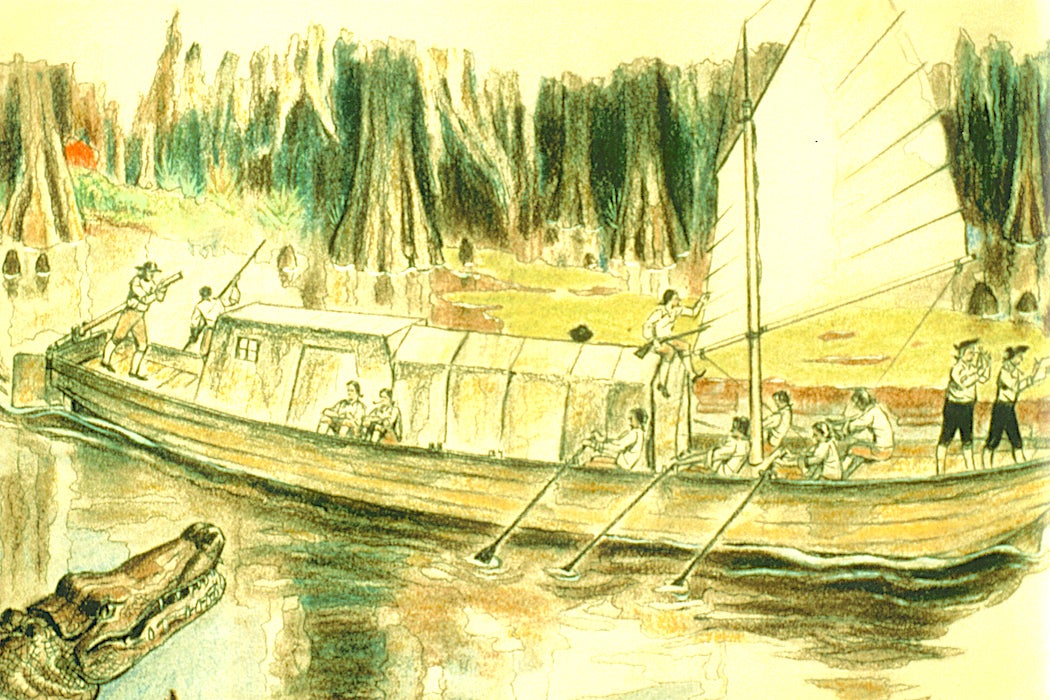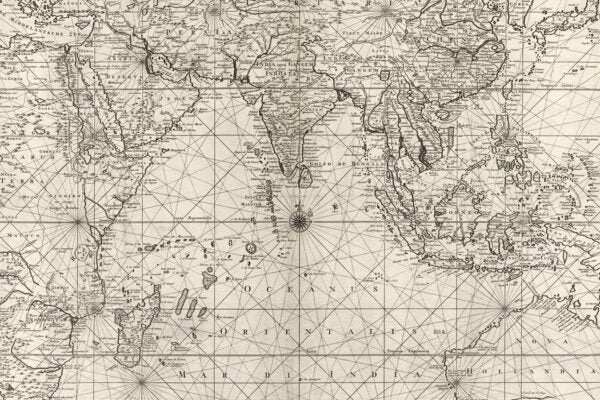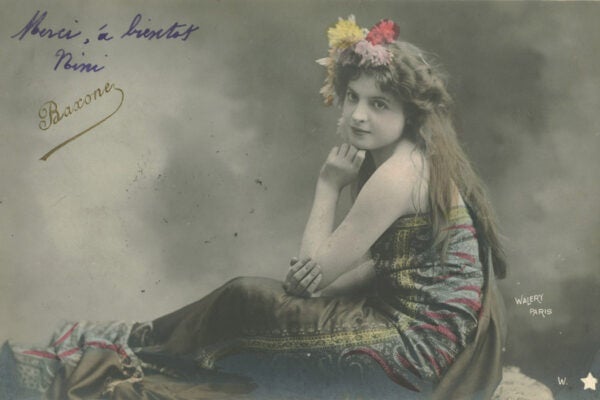In the first years of the nineteenth century, United States President Thomas Jefferson sent multiple expeditions west to learn more about the Native populations and resources of the vast area included in the Louisiana Purchase. Historian Michael D. Wise answers a question many of us have: what did those explorers eat?
By far the most lavishly provisioned mission was a three-month trip up the Ouachita River that began in the fall of 1804. Its leaders were William Dunbar, a member of the Scottish aristocracy who had made a fortune by enslaving Africans in Mississippi, and George Hunter, a Philadelphia pharmacist. The official purpose for the journey was to build relationships with local people along the river and study the area’s natural history. But Wise reports that the men treated it more like glorified glamping. For their party of nineteen, they brought not just necessary staples but more than sixty gallons of liquor and forty pounds of chocolate, along with sugar, coffee, and exotic spices. The group’s boats bogged down under the weight of the supplies, forcing them to unload and portage much of their cargo when they hit sandbars.
The expedition was a farce for other reasons. For one thing, Hunter insisted on bringing his twelve-year-old son with him, and he attempted unsuccessfully to have the boy paid as a member of the scientific team. And the fact that they supplied themselves so well may have hindered their mission. They aimed to make themselves as comfortable as possible and found little joy in breaking bread with the French, Spanish, and Native communities they encountered along the river. Wise notes that, in their reports, they frequently complained about the hospitality they received on their journey and criticized the French settlers they met for living largely on wild foods rather than adopting an agricultural lifestyle.
In contrast, Thomas Freeman and Peter Custis’s 1806 expedition up the Red River achieved a significant goal for the US, winning improved relations with the Caddo nation. Unlike Dunbar and Hunter, Freeman and Custis seem to have planned to survive mainly by hunting. They received help from Caddo guides who joined them for part of their journey, and they also found hospitality at various Indigenous villages where they stayed for weeks at a time, deepening their relationships by sharing food.
A third mission, led by Army Lieutenant Zebulon Pike, aimed to travel to the Rocky Mountains but was poorly planned from the start. When the men stumbled on a creek full of fish, it occurred to them that they should have brought a net with them. Eventually, they began to starve. They wandered off course into Spanish territory and were captured by Spanish soldiers—a welcome development since their captors fed them extraordinarily well while marching them back home across New Spain.
Get Our Weekly Newsletter
And what about the most famous of the Jefferson-era expeditions? Wise mentions Lewis and Clark only in passing. He notes that they sensibly laid in salt pork and dehydrated soup for their journey, but that they also relied on food they found in their travels. That included eating 190 dogs. Meriwether Lewis remarked that, over the course of the journey, the meat became a “favorite food.”







